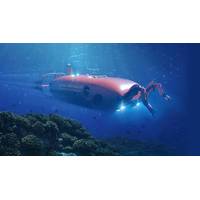
Nauticus Robotics Secures $20M Loan Deal with Key Stakeholders
inspections across an extensive subsea complex. The project features Nauticus’ first-to-market method of autonomous subsea manipulation on live subsea assets in water depths exceeding 1000m. A remote pilot will collaborate with Aquanaut during the operation through Nauticus’ acoustic communications link to ensure safe operations. The project also features what Shell has termed “a force multiplier” solution with multiple scopes of work to be executed simultaneously from a smaller class of service vessel that would not normally engage in IMR services. "Nauticus not
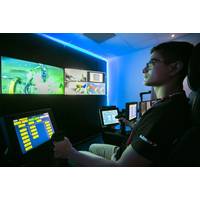
Subsea7 Confirms Remote ROV Piloting Capabilities
, with the successful remote piloting trials delivering a high quality of operations across a variety of IRM activities.”The project involved a remote piloting upgrade of the workclass ROV system on board an ROV support vessel. Real-time remote control was achieved via a secure, high-speed, communications link to Subsea7’s Aberdeen Onshore Control Center. Subsea7 also has two onshore control centers in Stavanger, Norway

Tech File: Smartgyro Stabilization for Diverse Marine’s Hydronaut Vessels
end of 2024.An autonomous UAV deployment daughter craft, Hydronaut’s primary objective is to support the launch, recovery and real-time operations of Aquanaut, its undersea robotic counterpart. Hydronaut ferries Aquanaut to and from the worksite and supports battery recharges as well as the communications link from the local remote operations center for supervised autonomous operations. Nauticus’ Houston-based global remote operations center provides additional technical and operational support.The SG80 is suitable for vessels over 60 feet, weighing 980 kg (2160 lb) and measuring 1.08 x 1
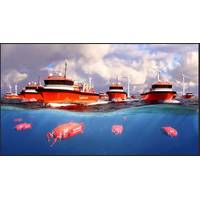
Nauticus Fleet: Robotic Surface, Subsea Fleet Launched
aspect of the fleet is Hydronaut, an 18-meter optionally crewed autonomous surface vessel (ASV) that supports the launch, recovery and real-time operations of Aquanaut, its undersea robotic counterpart. Hydronaut ferries Aquanaut to and from the worksite and supports battery recharges and the communications link from the local remote operations center for supervised autonomous operations. Additional technical and operational support can be provided from Nauticus’ Houston-based global remote operations center.Aquanaut is a fully electric, free-swimming subsea robot, controlled through acoustic
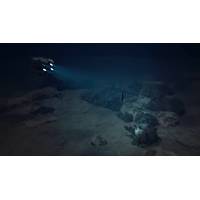
Sonardyne Launches Wireless Seabed UXO Disposal Capability
, safely initiating a shock tube detonator. Recent demonstrations were conducted over distances in excess of 1,000 m away," Sonardyne said.IT 6 is based on Sonardyne’s Wideband 2 digital signal technology, which, the company says, offers a reliable and long-range underwater wireless communications link. "The development of IT 6 means that technicians no longer need to wire UXO neutralizers up to signal relay buoys on the surface and are not restricted to good weather and daylight for setting up an initiation operation," Sonardyne said.Sonardyne IT 6: IT 6 is used with Sonardyne&rsq
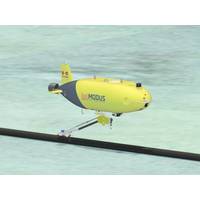
Subsea Vehicles: To Be (resident), or Not to Be?
and also the firm’s FlatFish AUV, which uses the same architecture (and is due to be tested in Brazil in deepwater in Q1 2022) to be based from a surface asset with a LARS. This could be an autonomous vessel, which is part of the firm’s vision of the future, and would provide a surface communications link, so the vehicle could be remote controlled, and power. Hydrone R would operate out of these garages either tethered or untethered, using a high bandwidth optical link, while FlatFish would operate untethered, on up to 150km excursions, with a low bandwidth link or no/ limited communications
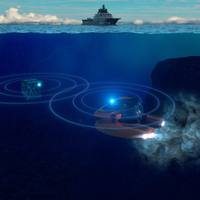
Sonardyne BlueComm to Live Stream Ocean Exploration
The Triton 7500/3 series submersible, reported to be the world’s deepest diving acrylic hulled manned submersible, will be outfitted with Sonardyne’s BlueComm optical communications link to enable live streaming of deep ocean expeditions.The acrylic hulled submersible is designed to carry three people down to 2,286 m water depth, and will operate from the research vessel REV Ocean, being built now for for the Norwegian non-profit organization of the same name.BlueComm is designed to allow the occupants of the Triton submersible to live stream high-definition video and audio to the surface
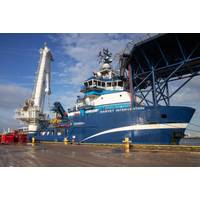
Remote Control: ROAM enables Remote Fusion 2 Survey Ops in the GOM
to undertake survey and construction tasks, combining traditional Long BaseLine (LBL) and inertial navigation system (INS) techniques in one, enabling the ability to perform real-time simultaneous location and mapping (SLAM) calibration of sparse seabed transponder arrays. ROAM is a portable communications link in a box which can operate over satellite or any other available network, such as 4G/5G and vessel Wi-Fi, providing secure access between Sonardyne engineers and any vessel needing remote expert assistance.The remote operations service was provided last summer during a deepwater campaign on
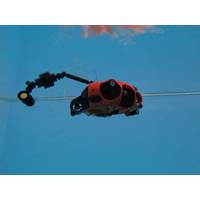
Subsea Tech's 'March of Miniaturization'
;s able to dip the sonar further away from the vessel. The next step is edge analytics – i.e. data processing on the drone so fisherman know faster where fish are.But, Birdview see other opportunities, including dipping a modem to gather data from underwater sensors or even to provide a communications link to remote control ROVs or mobile underwater platforms, so they don’t have to stay within range of a communications hub.It’s now working on a system with a 50km single range with semi and fully automated missions. A challenge is data transfer – when away from the host vessel



 February 2024
February 2024





